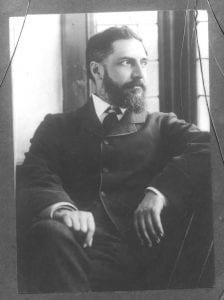Digital Digging: Shedding New Light on the Petrie Museum’s Archive
By Anna E Garnett, on 20 May 2021
During 2020-2021, when UCL was closed due to the coronavirus pandemic, UCL Culture’s curatorial team worked with students from the Institute of Archaeology’s MA Museum Studies on virtual work placements. These projects, which included archive transcription, documentation and object label writing, continue to provide opportunities for the students to gain practical curatorial skills to prepare them for their future careers while undertaking valuable work towards better understanding the collections.
Since September 2020, Karolina Pekala and Timea Deak worked together on two virtual curatorial projects focusing on aspects of the Petrie Museum’s internationally important archive.
Karolina: Beginning a placement at the Petrie Museum was definitely out of my comfort zone. As someone with a predominantly art history background, approaching Egyptian history and objects seemed intimidating until I began to learn about the collection through the task of transcribing negative lists.

A page from the handwritten list of Petrie Museum negatives, written by volunteer Joan Merritt in the 1990s.
The Petrie Museum archive contains a detailed handwritten list describing the photographic negatives in the collection. The information on this long list, describing hundreds of individual negatives, is vital for our understanding of archaeological photography and the publication process for early excavations. This project is a good opportunity for us to contribute to the documentation, and improve the accessibility, of the Museum’s archive.
The handwritten pages contained many names of objects foreign to me, prompting many Google searches. A particular set of objects I found fascinating are the ostraca: small pieces of limestone or pottery used for writing, drawing, or sketching. I was learning something new page by page, and now that museums are slowly opening, I am excited to visit and put the objects to their names.
Despite this being a remote placement, this experience has been enriching. I was especially interested to learn about Joan Merritt, the Petrie Museum volunteer behind the handwritten pages. Knowing that the digitisation of these lists is contributing to a bigger project and legacy is incredibly rewarding.
Timea: Attempting to piece together the life of a man long gone can be a challenging endeavour at the best of times! Doing this from the writings of others only adds an extra dimension to the challenge. Yet, this was what we tried to do as we scoured trough the archives for information on Flinders Petrie.
The aim of this project was to find out more about how Petrie, and his excavations, were portrayed in the media. For this project, we drew upon our research skills to collect digital newspaper clippings which mention Flinders Petrie and produce a searchable list of these documents for future study, which will be an important addition to the Museum’s digital archive.
No great scandal was unravelled through this exercise; however, we did stumble upon articles from which we could glean aspects of Petrie’s humanity. A 1938 article in the Washington Post describes a bizarre discussion concerning the size of Petrie’s head. It seemed that the archaeologist indulged this discussion himself, perhaps even finding it humorous. Flinders Petrie revealed that, over the many decades of his life, his head had never seemed to stop growing, and seemingly struggled to find the perfect hat to fit him comfortably! Such gems reveal no great accomplishment or secret side to Petrie, but they remind us that he, too, was human.
 Close
Close


